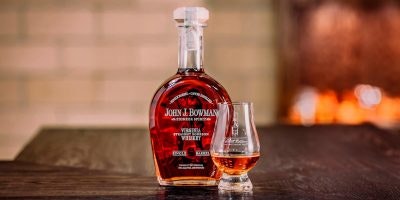Tequila is more popular in the United States than it ever has been before. The agave category has surpassed American whiskey in US sales, and its momentum seems set to only increase from here. So it’s never too late to get a proper introduction to the specifics.
“The classification of tequila is governed by the Consejo Regulador del Tequila,” says David Ravandi, owner of 123 Organic Tequila and creator of El Luchador Tequila. The CRT, as it’s known, is a frequent source of conversation among tequila enthusiasts, but suffice it to say that it has authority on the regulations involved.
Añejo Tequila Requirements
In the case of añejo tequila, the CRT states that it must age for a minimum of one year, but less than three years, in white or French oak barrels with a maximum capacity of 600 liters. Añejo builds upon the reposado classification, which you can think of more as rested as opposed to fully matured.

Reposado tequilas must spend 60 days in oak casks. Furthermore, for the reposado designation the casks can be of any size, allowing for, theoretically, massive vats to be used. At that size, the container would impart little significant oak influence to the spirit held within.
Establishing a baseline of a one year minimum, and a restriction on cask size, really leaves añejo tequila as the beginning of the aged agave domain.
Flavor Profiles
Perhaps more important than a specific regulatory description of the category is translating that into practice in terms of potential flavor profiles you might expect.
“Used bourbon barrels are still the default for aged tequila because they quickly impart caramelized flavors and a distinctly sweet signature,” Ravandi says. Of course, used bourbon barrels are also abundantly available by the millions. Therefore, the vast bulk of aged tequila spends its time maturing in used bourbon barrels.
“Stylistically to me, you start to see flavors of honey, florals, vanilla, and spices from the influence of the wood,” says Luis Navarro, El Tesoro Tequila’s national ambassador. The influence of the bourbon is surely felt. But it’s also the interaction of the agave spirit with the wood which begins its own chemical chain reaction of maturation. “However, it is important to note that the quality of any añejo tequila starts with the tequila itself.”
Beyond Bourbon Barrels
Tequila can be aged in other types too. “We’ve taken a different approach with El Luchador because we’re not trying to mask the flavors of the tequila,” Ravandi says, touting his initial use of new French oak more than 15 years ago. “This married the flavors of fresh and roasted agave [with the wood] instead of hiding them.” Specifically, El Luchador Añejo is aged for between 14 and 16 months in used white Burgundy casks from Puligny Montrachet.
Sherry casks are taking root in tequila country as well, including with Patron’s Sherry Cask Aged expression. Meanwhile, El Tesoro has even turned to a different type of whiskey cask, heavily peated Scotch whisky from Laphroaig. The result was the El Tesoro Mundial Collection Laphroaig Edition. This bottling gives more of the impression of a smoky mezcal than a typical tequila.
One Step Further: What is Extra Añejo Tequila?
Extra añejo tequila became an official legal category in 2006. This relatively new classification has garnered more attention within the past several years as additional producers continue dabbling with it. As the name suggests, extra añejo continues building on the backbones of añejo with an increased length of maturation. It clocks in at a minimum of three years.
“This style was actually first introduced by El Tesoro with El Tesoro Paradise in 1994, before the CRT officially established the classification,” Navarro says. “Then, we released our first official extra añejo in 2019, the one you will see on shelves now.”
El Tesoro matures its extra añejo for between four and five years. That exceeds the minimum threshold and therefore really embraces those mature characteristics.
“For me, I taste coffee, butter, caramel, dark chocolate, toast, and spicy cinnamon,” Navarro says. “Our master distiller at La Alteña Distillery, Carlos Camarena, has really made this into the ultimate sipping tequila, something that will allow you to appreciate the balance between the agave-forward flavor and the woody notes imparted by the aging process. Both have such unique flavor profiles on their own that bringing them together as one is truly an art form.”
To Mature or Not to Mature
Aging tequila is a fine line to walk. In fact, there are agave purists who maintain that the spirit shows its true nature best when it’s unaged. However, those who appreciate a wide range of styles and flavors would only be doing themselves a disservice by not exploring how well-made tequila can be intertwined with, and enhanced by, the magic of maturation.
“While the blanco style is tequila in its purest form, a beautiful expression of agave and certainly the most popular style, in order to fully understand the capabilities of tequila you must experience añejo and extra añejo,” Navarro says. “Otherwise, I’d say you would be missing out on beautiful nuances and complexities that make the spirit unique. Barrel aging brings it to a different level, allowing tequila to compete in the world of the best aged spirits on the market today.”
Some bottles may lean into those oak flavors as much as possible while moving further away from the raw agave at their core. Meanwhile others may prioritize preserving and highlighting the agave itself first and foremost. The fun, as always, is in you figuring out which you prefer.
Looking for more añejo tequila?
With Distiller, you’ll always know what’s in the bottle before you spend a cent. Rate, Review, and Discover spirits. Head on over to Distiller, or download the app for iOS and Android today!
Want to enjoy Distiller ad-free? Join Distiller Pro today to support the Distiller platform and keep ads off of your screen.


